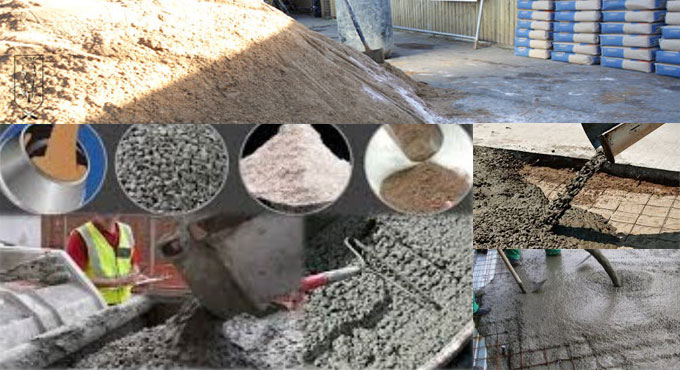
Storage method for different materials of concrete
The prime components materials of concrete are cement, sand, gravel and water and the concrete is formed with them. The cement is considered as the most vital material as it fastens other materials physically and chemically with water and gets consolidated. Often, admixtures are included in concrete to improve its functionalities.
Components or Materials of Concrete:
1. Cement: In order to manufacture concrete, different types of cements are utilized and among them Portland cement is mostly recognized. Each type of cement contains diverse properties which can be applied to concrete. Limestone and clay are also utilized for the making of cement.
2. Aggregates: The nature and quality of aggregates in concrete differs on the basis of the purpose of construction. The shape, size, grain, density and grading of aggregates etc. all affects The functionality, longevity and strength of concrete. The aggregates are categorized as fine aggregates (sands) and coarse aggregates (gravel).
3. Water: Only drinkable water should be utilized for concrete production and construction. The water should have been dirt free and does not contain vegetation, harmful matter and acids.
4. Admixtures: The objective of admixtures is to rectify the properties of normal concrete to satisfy the needs in accordance with construction design.
Storage Methods of Concrete Materials:
The method for preserving concrete materials is based on the scope of the work. The following safety measures should be taken throughout their storage:
Storage of Cement: Always try to preserve cement in weatherproof shed and retain dry. There should not be any types of openings like windows in the shed. The doors of such storages shed should have been located on the sideway to resist rain penetration and draughts.
The floor for cement storage should be built up with tough boards and joists lifted clear to the grounds, or blanks load on a dry concrete slab over ground level. All cement should not be preserved for prolong times.
Storage of Aggregate: The aggregates should be retained in a hygienic condition and should not be polluted with unwanted materials. Aggregate on medium- to large scale building sites are generally accumulated in bins. The floor of the bins is created with feeble concrete and drained or placed to falls. The barriers or walls should be built up with stout planks, sleepers or concrete blocks.
Aggregates are preserved in adjacent bins but there should be high dividing walls to manage the highest stockpile devoid of over spilling.
Layout of storage: Aggregate bins, mixers, cement sheds and water supply should have been organized properly so that all the materials can be availed smoothly as well as concrete can be transported from the mixer to the delivery point easily.


